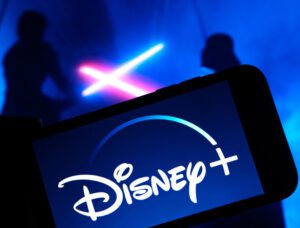 Digital marketers spend a disproportionate amount of budget during the holiday season – but is all that cash actually generating incremental sales?
Digital marketers spend a disproportionate amount of budget during the holiday season – but is all that cash actually generating incremental sales?
Jewelry brands spend more in Q4, roughly 60% of their annual spend, than they do in the other three quarters of the year combined, based on analysis from Nielsen. Toy brands spend around 56% of their annual budget in Q4, while video game advertising in Q4 eats up 52% of annual spend.
But the Pavlovian response to Black Friday, Cyber Monday, et al. has become such an ingrained behavior over the last decade or so that it’s arguable consumers would flock to stores and ecommerce sites without too much encouragement.
“Retailers made up a reason for people to shop and it worked,” said Deren Baker, CEO of marketing analytics company JumpShot. “The retailers keep creating deals and the hype conditions people to buy.”
It’s a strategy, however, that pays dividends – at least in the short term. Although increased traffic doesn’t always translate into healthy conversions – throwing money at volume doesn’t guarantee quality prospects – shopping cart abandonment in 2014 was down between 10% to 20% against pre-Black Friday online traffic for Amazon, Target, Macy’s and Walmart, according to JumpShot.
But the deep discounts for which the week around Thanksgiving has become known is part of a zero-sum game, with retailers on the losing side, said Randy Antin, JumpShot’s VP of marketing, who previously served as a senior marketing manager at Gap, heading up the brand’s search and affiliate business.
“Every year, retailers feel like they need to do something bigger than everyone else, and usually that means a deeper discount,” Antin said. “Some stores are going out there and offering up to 70% off, and that’s not sustainable. And consumers know that a deeper deal is coming, so they feel like they might as well wait to shop.”
The data bears that out. According to the 2014 Verizon Retail Index, last-minute shoppers aggressively courted discounts in the week before Christmas, holding out on Black Friday and Cyber Monday for even better discounts closer to mid-December. The index also noted a general propensity to shop online throughout the holiday season, regardless of the day or the deal.
Research from Cardlytics pointed to a similar trend, noting that 36% of shoppers buy the majority of their gifts at the last minute, putting pressure on retailers to extend their Black Friday deals later into the season.
But that doesn’t mean that marketers are spending to no avail during Q4. Far from it, said Ajay Kapur, CEO of mcommerce platform Moovweb, which counts Macy’s as a client.
“Retailers don’t have the luxury for that kind of thing,” Kapur said. “They have lean margin businesses and they have relatively sophisticated ways of knowing if their spend worked when it comes to specific promotions.”
It’s the rest of the year that’s touch and go, at least when it comes to how much a particular customer relationship is worth in the long term.
“Where they have zero understanding is the lifetime value of the consumer they acquired through a promotion,” said Kapur.
And that’s mainly down to logins, or the lack thereof. Amazon requires visitors to sign in before making a purchase, while newer online-only retailers like Gilt Groupe and Zulily require logging in even to browse. But retailers like Walmart, Target and others allow shoppers to check out as a guest.
“Even for retailers with a phenomenal brand like Walmart or Macy’s or Nordstrom’s which are well above the average retailer in terms of recognition, the vast majority of their transactions are guest checkouts,” Kapur said. “Either someone forgot their login or they forget that they have one or they choose not to use it.”
But regardless of the reason, it’s the difference between knowing who a customer is and simply knowing that a sale was made.
“That essentially makes it a one-time checkout,” Kapur said. “I view these types of holiday promotions as a sort of consequence of the transactional nature of most ecommerce.”
Amazon isn’t haven’t any trouble, though. Jumpshot noted that in the period between October and December 2014, Amazon’s total traffic, both mobile and desktop, and its total purchases dwarfed Macy’s, Walmart and Target combined.
While some of that is due to digital showrooming – consumers who receive a promotion directly from a brand and then head over to Amazon to comparison shop – it’s also down to ease of use, cutting down on the number of clicks or taps it takes between selecting an item and having it shipped.
“Although price is clearly a big component here – which is true whether it’s Black Friday or Christmas or just an average Wednesday in June,” said IgnitionOne CRO Jon Baron. “But, even when you’re as big as Amazon, it can come down to something as simple as the navigation to the cart.”
That said, convenience and user-friendliness are more important during the holidays.
“Users can be that much more fickle during this time of year, so the usability has to be good,” Kapur said. “If not, they’ll just go to another site that works.”












